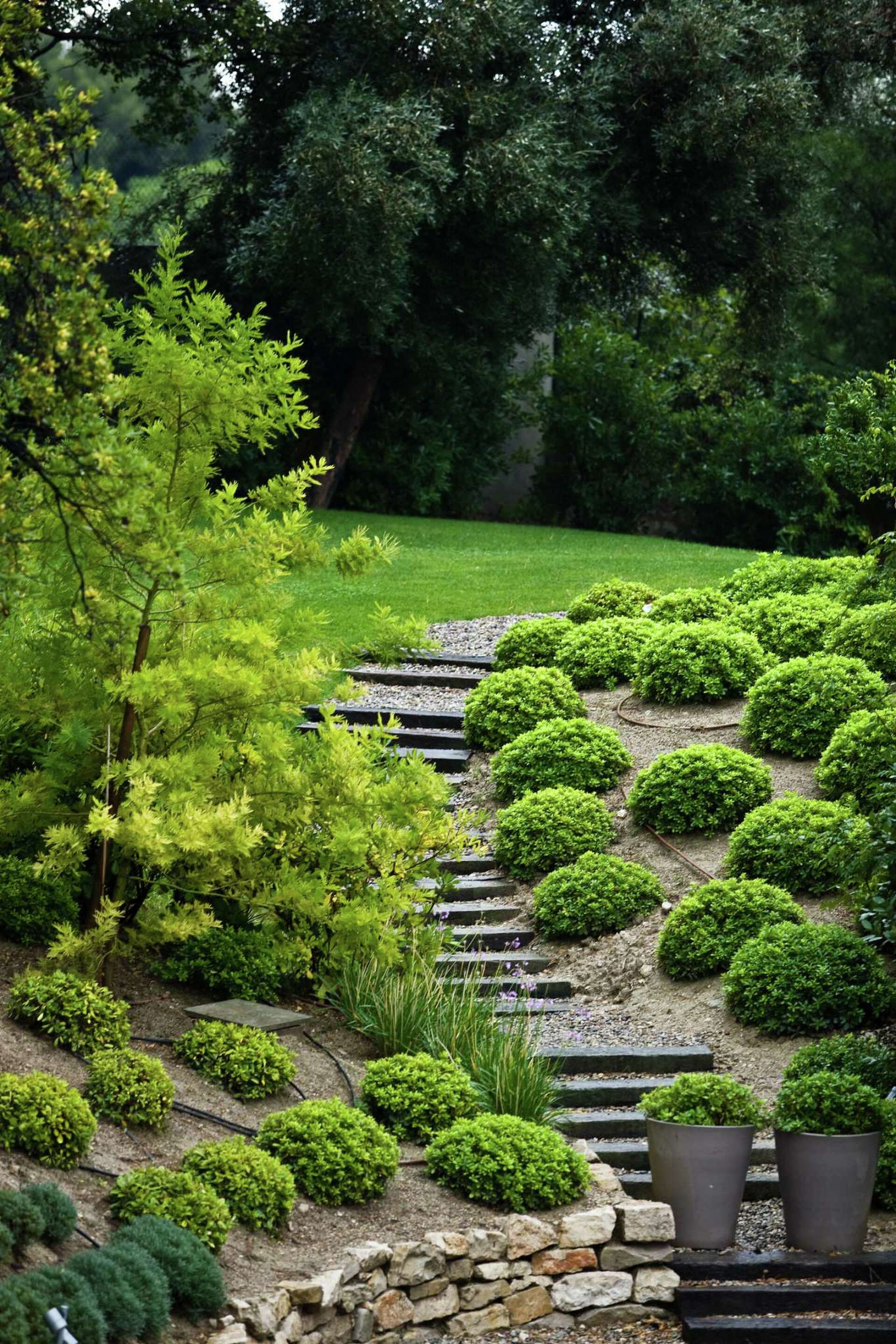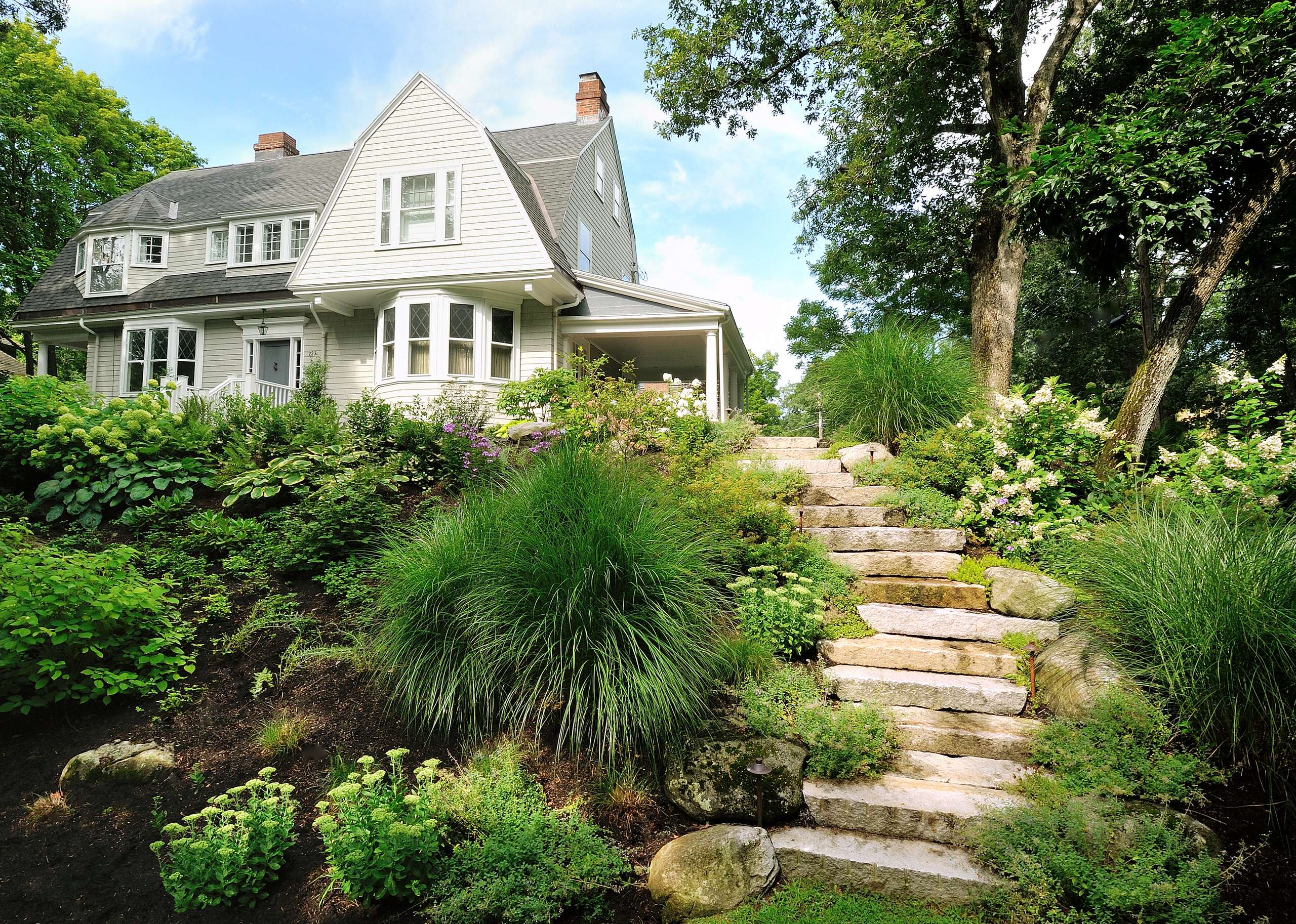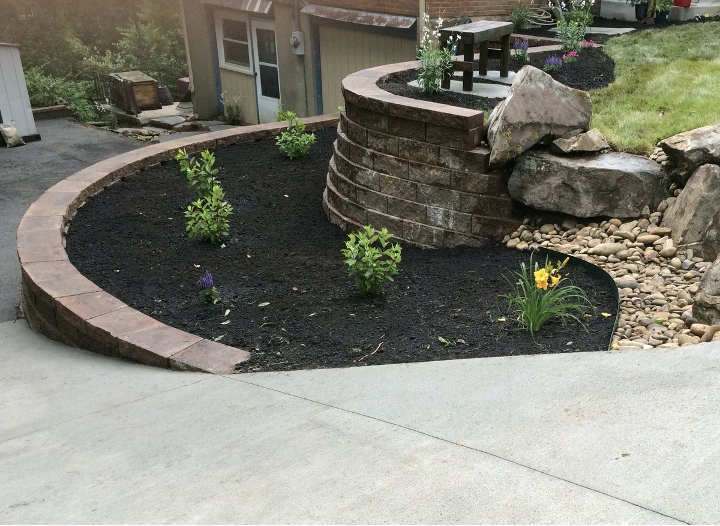Simple techniques to improve Steep hill landscaping with minimal effort.
Simple techniques to improve Steep hill landscaping with minimal effort.
Blog Article
Explore Innovative Methods to Steep Hill Landscaping for a Spectacular Landscape Style
Steep hill landscape design presents unique challenges and chances for developing aesthetically striking outside areas. By utilizing innovative strategies such as terraced gardens and thoughtfully made retaining wall surfaces, one can successfully handle dirt erosion while boosting aesthetic allure. The mindful choice of native plants can reinforce sustainability and reduce upkeep. The combination of water functions and exterior living rooms increases appealing inquiries regarding performance and design consistency. As we explore these imaginative techniques, the possible to transform a tough landscape into an awesome resort becomes increasingly noticeable. What cutting-edge remedies might arise in this endeavor?
Terraced Yard Designs
As house owners seek to maximize their outdoor space, terraced garden layouts have become an ingenious solution that not just enhances visual allure but additionally addresses useful landscape design challenges - Steep hill landscaping. These styles entail producing tipped degrees on sloped terrains, enabling effective usage of otherwise hard locations. The terracing process not just alleviates soil disintegration but additionally enables for better water management, making certain that plants obtain sufficient hydration without the risk of runoff
Terraced yards can be tailored to fit any design, from contemporary minimal to rich, cottage-like setups. They give chances to include a variety of plants, blossoms, and shrubs, developing aesthetically striking layers that draw the eye. Furthermore, these layouts can include pathways, seating areas, and even little water features, changing a high incline right into a useful and inviting outside space.
The convenience of terraced gardens makes them ideal for various climates and soil types, promoting biodiversity and encouraging lasting gardening practices. By carefully selecting plants that grow at different altitudes, home owners can grow vibrant ecological communities while enhancing their home's general value. Basically, terraced garden styles function as a useful and stunning service for reliable high hill landscape design.
Innovative Retaining Wall Concepts
Retaining walls play an important role in hill landscape design, offering architectural support while including visual value to outside areas. Ingenious style strategies can change these functional elements right into prime focus that enhance the general landscape.
One popular idea is to make use of all-natural rock, which blends perfectly with the environment and includes a rustic beauty. For a modern twist, think about using concrete blocks with a distinctive surface or tinted alternatives that can be arranged in distinct patterns. This enables customization that can reflect the home owner's style.
Incorporating living walls is an additional imaginative option. These structures not just keep dirt yet also support a range of plants, developing a rich, green attribute that softens the hardscape. Additionally, incorporating lighting into the retaining wall surface design can highlight its texture and shape during the night, improving safety and security and charm.

Selecting the Right Plant Kingdoms
Choosing the right plants for your landscaping task involves careful factor to consider of both aesthetics and performance. Steep hill landscapes present distinct difficulties, including dirt disintegration and drainage issues, which necessitate the choice of resilient plant types. Go with native plants, as they are well-adapted to regional problems and call for much less maintenance. Deep-rooted perennials and groundcovers, such as sedum or creeping thyme, can assist support dirt while giving aesthetic charm.

Seasonal rate of interest is an additional crucial factor; pick plants that flower at different times throughout the year to preserve a lively landscape. Steep hill landscaping. In addition, take notice of plant spacing to stop overcrowding and ensure each plant has room to grow. Eventually, a well-curated choice of plants will certainly not just enhance the beauty of your steep hill landscape but also advertise environmental balance and sustainability
Water Attributes for Slopes

When making these functions, it is vital to think about the natural topography and water drainage patterns of the landscape. A well-placed fish pond can serve as a focal point while also accumulating rain, which aids to reduce flooding and reenergize groundwater levels. In addition, integrating a series of tiny waterfalls can create a soothing acoustic experience, while at the same time routing water flow in a regulated manner.
Choosing appropriate products is important for longevity and harmony with the surrounding atmosphere. All-natural stones and stones can mix seamlessly right into the landscape, enhancing the natural feel of the water attribute. Moreover, the integration of indigenous marine plants within these features not only enhances visual allure but likewise supports regional wild animals, producing an ecological look at this now community that grows on the incline.
Ultimately, the mindful unification of water features right into steep hillside landscaping uses both functional and aesthetic benefits, adding to a sustainable and aesthetically striking environment.
Outdoor Living Rooms on Hills
Producing exterior living rooms on hills provides a special opportunity to mix functionality with awesome views. These raised areas can be transformed right into welcoming hideaways that take advantage of their natural environments. Key considerations include access, security, and design visual appeals.
To make the most of usability, incorporate terraced decks or outdoor patios that step down the slope, permitting seamless transitions in view it between various levels. These frameworks can organize seating locations, fire pits, or eating rooms, producing an intimate atmosphere for gatherings. Utilizing durable materials such as stone or composite decking will certainly enhance resilience while complementing the all-natural landscape.
Including landscaping components is important to integrate the living spaces with capital's topography. Growing indigenous flora not only maintains the dirt yet additionally improves visual charm. In addition, tactical lights can emphasize courses and centerpieces, making these areas usable during the evening.
Conclusion
Incorporating terraced yards, ingenious keeping wall layouts, native plant choices, and calculated water functions can change high hill landscapes into magnificent and practical exterior areas. These elements not just enhance aesthetic appeal however additionally address functional concerns such as dirt erosion and drainage monitoring. Furthermore, the integration of welcoming outside living areas fosters pleasure and communication with the landscape. In general, site here a well-executed design harmonizes nature and human task, creating a picturesque environment that invites gratitude and peace.
Report this page